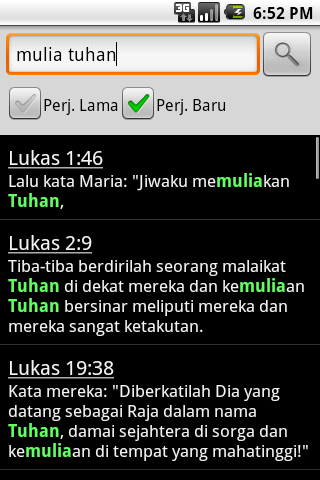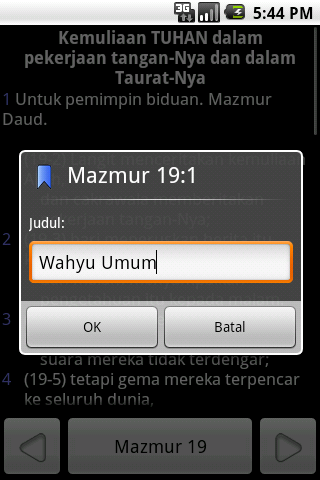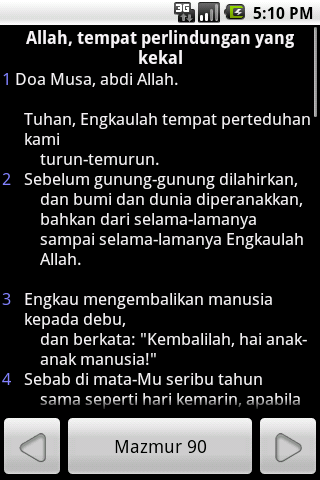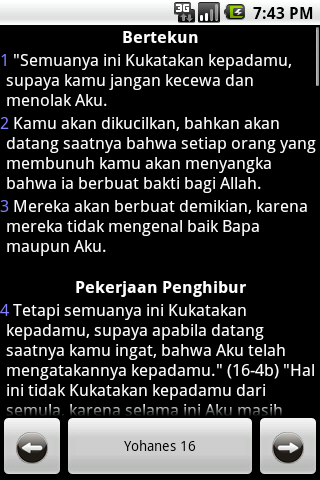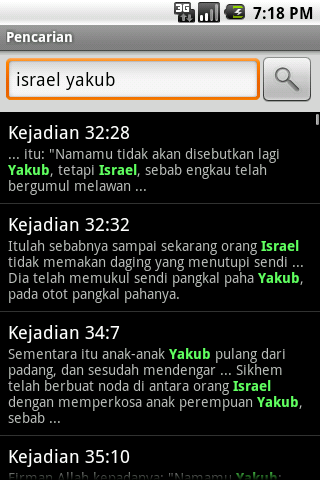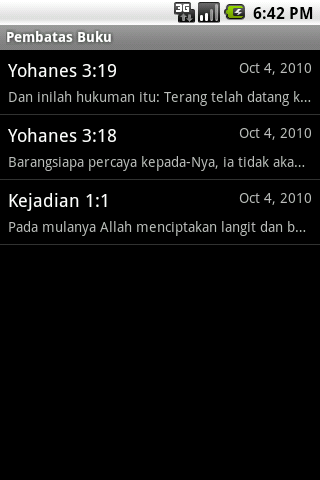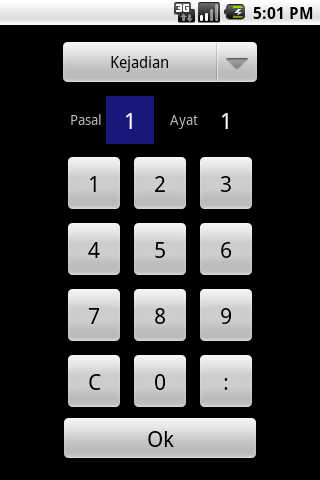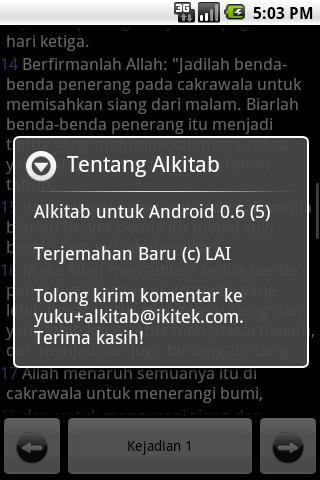Do we need to stick with black background, white text, and blue verse numbers? User feedback says No!
Previously there is a setting to change the brightness of the text – the text stays white (or gray), the background is still black. Many requests say they want white background and black text.
Rather than satisfying individual request, why not allow us to customize the colors as free as we want?
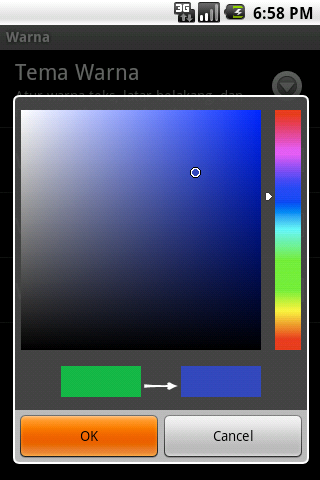 |
| Select color dialog |
The above select color dialog is inspired by Adobe Photoshop. It was not easy for me to create that, because I need to understand combining gradient paints and converting between color values. I’m thinking of open sourcing this component soon [Update: now available].
But — isn’t it troublesome to select the colors for each of the background, text, and verse numbers?
Now we have Color Themes. Instead of selecting the colors one by one, we have presets for users to choose. They have names (in Indonesian), but they’re just meaningless really.
 |
| Color Theme 2 Blackboard 3 Tropic Lush 4 Moss Lake 5 Warm Ash 6 Sweet Orange |
Now we are not forced to see black-and-white anymore, but colors! The colors are applied for bookmarks and devotion screens too ^^
 |
| Colorful enough? |
